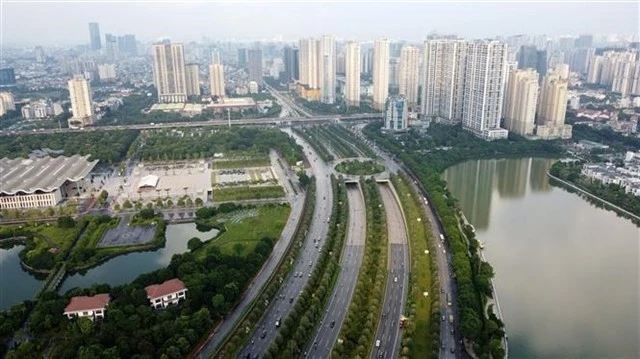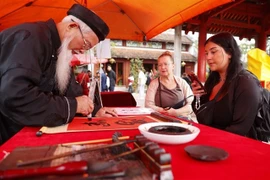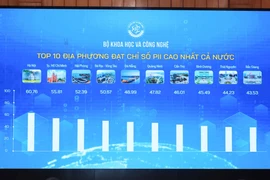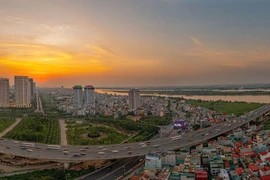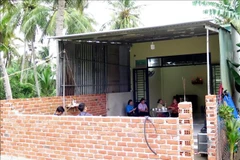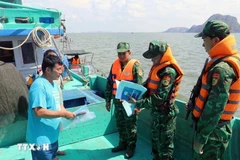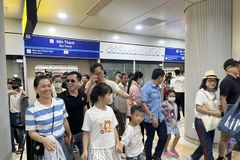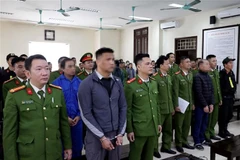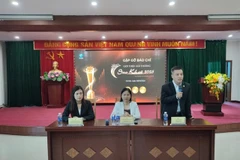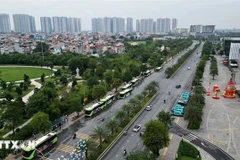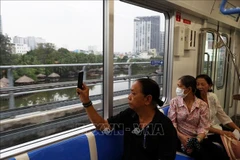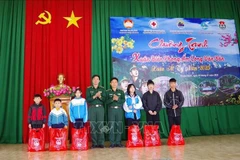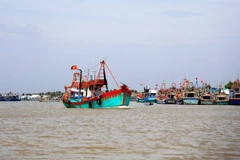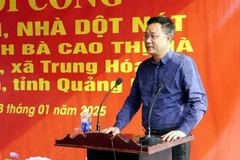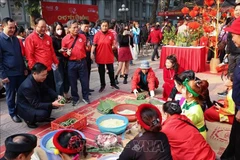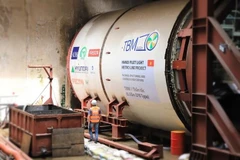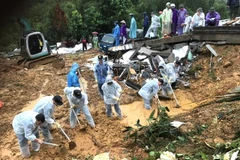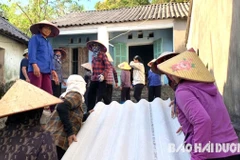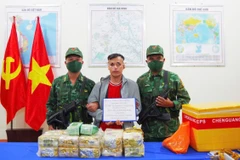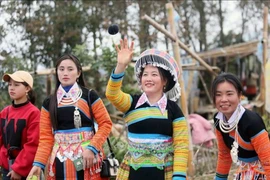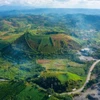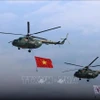Hanoi (VNS/VNA) - Deputy Prime Minister Tran Hong Ha has approved adjustments to Hanoi’s master plan, aiming for the city to become a globally connected hub with high living standards and a development level on par with the capitals of developed countries in the region and worldwide by 2045.
Under Decision No 1668/QD-TTg, signed by Deputy PM Ha, Hanoi consists of 30 administrative units, including 12 urban districts, 17 rural districts and a township. The planned area covers approximately 3,359sq.km.
In the master plan, Hanoi will be a modern urban area, a centre for regional integration and a comprehensive service hub for the nation, in addition to being an attractive economic and cultural destination on the international stage by 2030.
By 2045, Hanoi will become a smart and ecological city, a financial, service, science-technology and human resource training hub, and a venue for major political, economic, cultural and scientific events in Asia and globally.
Hanoi aims to be an intelligent, modern, green, clean, beautiful, secure, safe and happy city, achieving rapid and sustainable growth to drive the development of the Red River Delta, the northern key economic region and the nation.
With a pivotal role in the national urban development strategy, Hanoi will be one of Southeast Asia's and Asia-Pacific's leading centres for economics, trade, tourism and commerce.
Population estimates
The master plan estimates Hanoi's population growth to reach 12 million people by 2030, including approximately 10.5 million permanent residents, and grow to 14.6 million by 2045, with about 13 million permanent residents.
By 2030, the total construction land of the capital city is estimated to reach 148,000–150,000ha, including 89,000–90,000ha for urban land and 59,000–60,000ha for rural land.
This number will be increased to 198,000–200,000ha by 2045, including 124,000–125,000ha for urban land and 74,000–75,000ha for rural land.
The master plan establishes Hanoi as a multi-centric urban region with five distinct urban zones. The Southern Red River Urban Zone includes the historic inner city, its expanded areas, and urban expansions westward and southward of Dan Phuong, Hoai Duc, Ha Dong, Thanh Tri and parts of Thanh Oai and Thuong Tin.
The Eastern Urban Zone comprises Long Bien and Gia Lam districts. The Northern Urban Zone includes Dong Anh, Me Linh, and Soc Son districts, with plans to form a Northern City in the future.
The Western Urban Zone covers Son Tay town, and the districts of Ba Vi, Phuc Tho, Quoc Oai, Thach That and Chuong My. This includes plans for a future city and upgrading Son Tay town into a city.
The Southern Urban Zone includes the districts of Thanh Oai, My Duc, Ung Hoa, Thuong Tin, and Phu Xuyen, with studies on forming a city in the southern region in the future.
Night economy development
The plan emphasises the development of modern trade and commercial services in Hanoi’s central urban area. This includes creating commercial-service hubs that meet regional and international standards, establishing organised and modern shopping streets, expanding pedestrian zones and promoting a night economy model integrated with tourism.
This approach aims to enhance the city’s vibrancy and cultural appeal.
Tourism development will focus on leveraging key river corridors to create attractive tourist destinations. These corridors include the Red River and Duong River stretch, the Day River and Tich River banks and the area adjoining the To Lich River and Nhue River.
Along these corridors, the city will develop tourism infrastructure such as recreational parks, theme parks, tourism-integrated production facilities and comprehensive systems for accommodation and visitor services.
The master plan also addresses flood management and water resource challenges. Solutions will be implemented to mitigate flooding in areas with poor drainage.
Efforts will be made to restore water levels in the main channel of the Red River and to replenish water for the To Lich River and other drainage systems.
The city aims to become a leading national healthcare hub, focusing on world-class technological advancements and integrating medical services with healthcare tourism and wellness retreats.
To achieve this, the city will allocate 650–700ha of land for the construction of hospitals. Specialised hospitals and medical complexes will be developed in satellite urban areas to provide advanced healthcare services.
The city will also expand public and private healthcare centres in satellite cities, ecological urban areas and towns to meet the healthcare needs of local communities.
Land will be reserved for medical complexes serving both the city and the surrounding regions. Existing hospitals and healthcare facilities in the inner city will be upgraded to meet modern standards and continue to serve the community.
Facilities for treating infectious diseases with high transmission risks will be relocated outside the central urban area to ensure public safety. Additionally, the city will reserve land for the development of high-quality research, training and medical treatment centres./.
